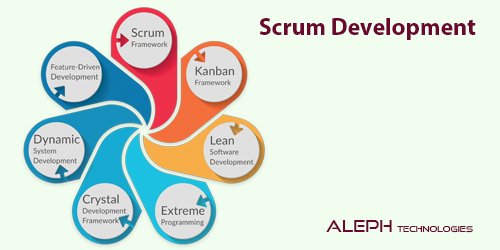Optimizing Agile Teams: Unveiling the Power of Team Dynamics in Software Development
Unlock the potential of agile teams by understanding the critical role of team dynamics in software development. Explore the impact of individual characteristics, moods, and external factors on agile team performance. Learn how to address issues promptly, foster a positive working atmosphere, and cultivate the right mindset for success in an Agile environment. Elevate your team dynamics for enhanced collaboration, efficiency, and project delivery.
The Crucial Role of Team Dynamics in Agile Development
Team dynamics play a pivotal role in building and managing high-performing software engineering teams. In the world of stringent deadlines and high expectations, team dynamics are often overlooked but are essential for the success of any endeavor. This article sheds light on the significance of team dynamics, especially in the context of agile development, and explores how they influence team behavior, reactions, and overall performance.
Embracing Change in Agile Development
In the dynamic landscape of software development, organizations are increasingly adopting agile principles. Agile development recognizes change as a constant and encourages its full acceptance. However, successful change implementation relies heavily on individuals with the right mindset and attitudes. The article emphasizes the role of people in driving change and achieving more effective outcomes for agile teams.
Understanding Agile Team Dynamics
Agile team dynamics refer to the unseen forces shaping team behavior, reactions, and performance. These dynamics are influenced by individual personalities, interactions within the team, the nature of the work, and the overall work environment. A cohesive team is essential for achieving shared goals, and any disruption in the team dynamic can impact overall performance.
Impact of Team Dynamics on Agile Teams
Positive Dynamics: Boosting Collaboration 🤝
Positive team dynamics contribute to a social environment where team members feel included and enjoy working together. This camaraderie fosters commitment, motivation, and ultimately leads to improved performance and better results. A positive team dynamic positively influences company reputation and culture.
Negative Dynamics: Risks of Division 🚫
Conversely, negative team dynamics can result in exclusion, resentment, and the formation of subgroups within the team. Poor communication, misunderstanding, and a lack of cohesion can lead to reduced performance and suboptimal outcomes. It's crucial to address negative dynamics promptly to avoid long-term consequences.
Individual Characteristics and Agile Success
Overcoming the Fear of Failure 🚀
Agile frameworks thrive on principles such as accountability, teamwork, customer collaboration, and responsiveness to change. To adhere to these principles, individual values and attitudes must align with the team's collective mindset. Overcoming the fear of failure is key to promoting a learning culture, where mistakes are seen as opportunities for improvement.
Moods and Emotions in Agile Teams
Recognizing the Impact 🌐
Modern workplaces acknowledge the significant influence of moods and emotions on team performance. A cohesive, supportive team atmosphere can mitigate the negative effects of individual moods. Positive attitudes within the team contribute to a harmonious work environment and enhance overall team dynamics.
External Factors Shaping Team Success
Administrative and Management Perspectives 🏢
External factors, such as workplace infrastructure, lighting, facilities, company policies, and managerial decisions, play a crucial role in motivating and improving individual and team productivity. Effective leadership, marked by supportive decision-making and a shift from management to leadership, is essential for fostering agile teams.
Customer Involvement for Project Ownership 🤝
Active customer involvement provides direction and a sense of ownership to the project. Continuous support from engaged customers positively impacts team morale and performance. On the other hand, a disengaged customer can affect team spirit and overall project success.
Addressing Concerns and Building a Healthy Agile Team
Promptly Identifying Pain Points 🚨
To facilitate the growth of development teams, measures must be in place to quickly identify and address concerns. Agile methodologies provide avenues for team members to voice business-related concerns. An adaptable tool, tailored to the team's unique needs, allows for the rapid resolution of issues and encourages open communication.
Cultivating Agile Mindsets for Effective Collaboration
Building a Collective Effort 🔄
In the transition to Agile, developing attitudes that support effective teamwork is crucial. Apart from technical skills, empowered individuals who embrace collective effort contribute to the success of Agile. Team members need to consciously avoid counterproductive behaviors and operational habits.
Conclusion: Nurturing Agile Success
Achieving success in Agile development requires a multifaceted approach that addresses team dynamics, individual attitudes, and external factors. By acknowledging the importance of these elements, organizations can create a conducive environment for agile teams to thrive, innovate, and consistently deliver quality results. 🚀
Learn more about Agile :
Related posts
-

Scrum Development: A Comprehensive Overview 🚀
Mar 25, 2024 -

Understanding SAFe Principles: A Comprehensive Guide 🚀
Mar 25, 2024 -

Understanding Scaled Agile (SAFe) and Disciplined Agile Delivery (DAD)
Mar 25, 2024 -

Scrum vs SAFe: Unveiling the Differences 🔄
Mar 25, 2024

Please login to check comments